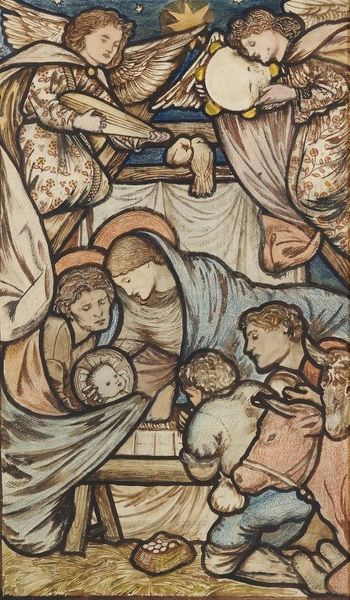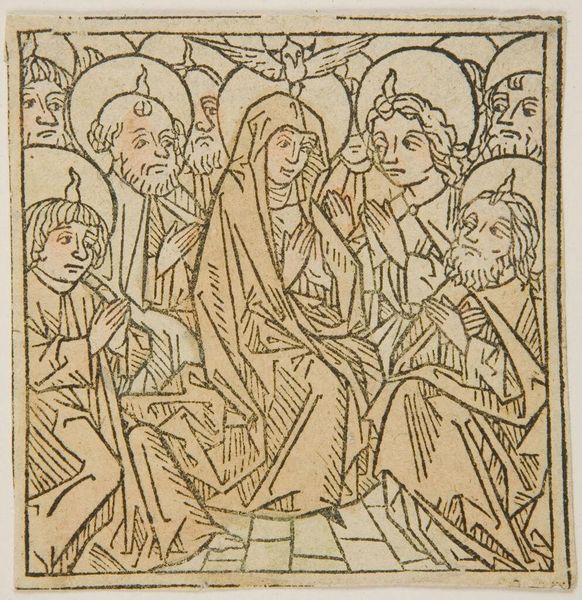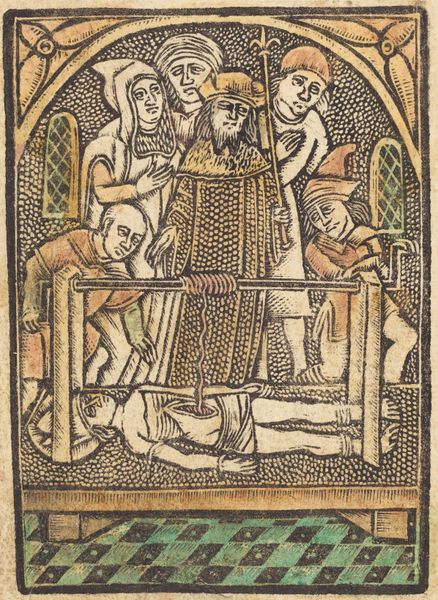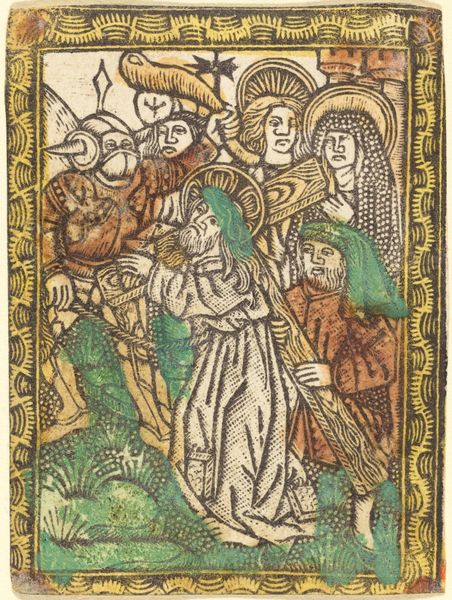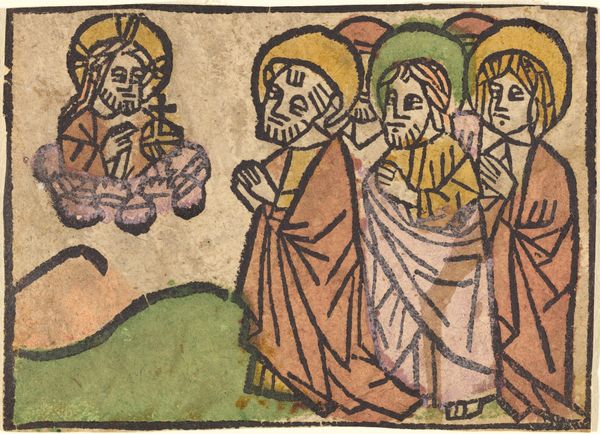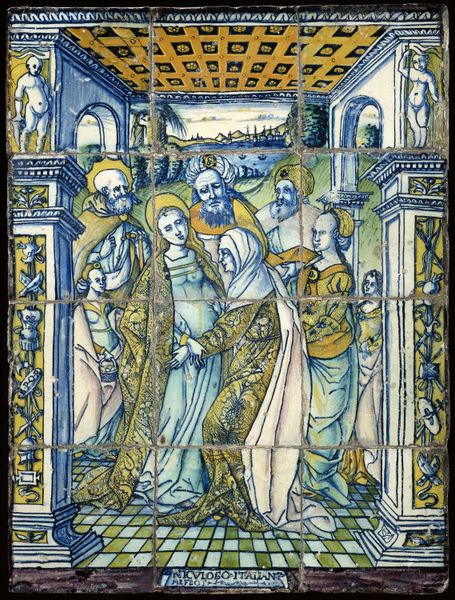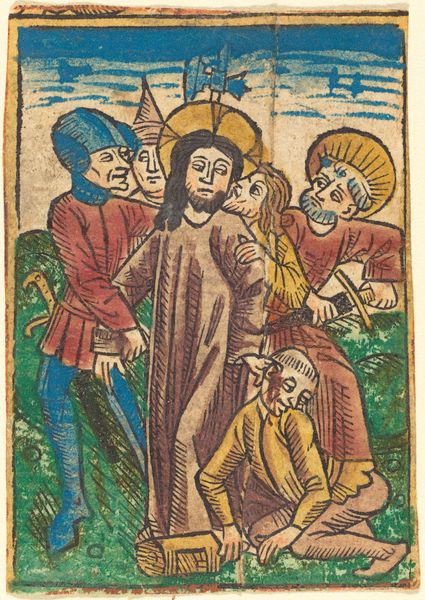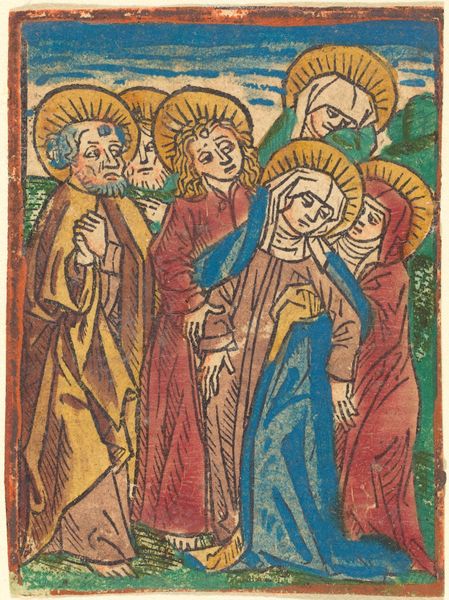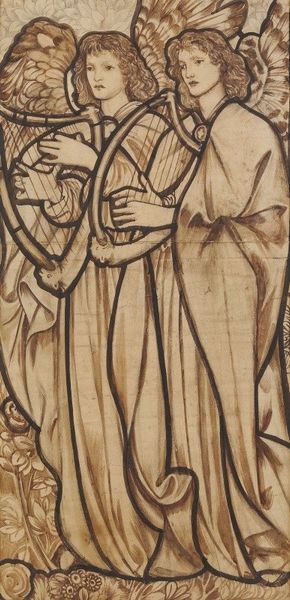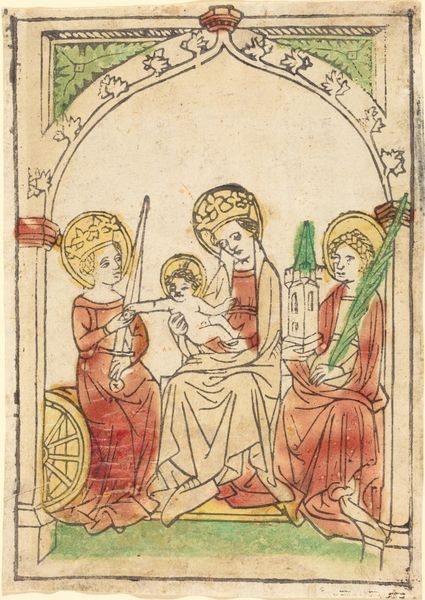
drawing, watercolor
#
drawing
#
stain glass
#
figuration
#
watercolor
#
group-portraits
#
watercolour illustration
#
pre-raphaelites
#
stained glass
#
watercolor
Copyright: Public Domain: Artvee
Editor: So, here we have Edward Burne-Jones's "The Song of Solomon – I Charge You, O Daughters of Jerusalem," a watercolor drawing from 1862. It almost looks like a stained-glass window. What's striking is how these women are presented, almost like figures frozen in time. What do you see in this piece? Curator: Well, the Pre-Raphaelites, including Burne-Jones, were deeply invested in disrupting the rigid Victorian social order, particularly concerning women's roles. Think about the title, drawn from the Song of Solomon – a biblical text often interpreted through the lens of romantic and erotic love. But Burne-Jones isn’t merely illustrating scripture. Editor: How so? Curator: These women are active participants. They're not passive objects of desire, but creators of music and possibly agents of change. The elongated figures and medieval aesthetic connect to their interest in overturning contemporary tastes, reaching back to earlier eras. It almost reads like a frieze, right? The limited color palette directs our gaze, but also asks us: Who has historically had the right to be heard? Editor: I see what you mean. They're presented with such deliberate calm. Do you think that challenges conventional Victorian representations? Curator: Absolutely! These are women with a voice, and not just in a literal, musical sense. They’re subtly demanding to be seen and understood on their own terms, an artistic rebellion against societal constraints placed on women in that era. Editor: This has completely shifted how I initially saw the piece. Thanks for shedding light on its layered meanings! Curator: And thank you for posing such thoughtful questions. It's always a rewarding journey when we connect artworks to broader narratives of power, identity, and representation.
Comments
No comments
Be the first to comment and join the conversation on the ultimate creative platform.
